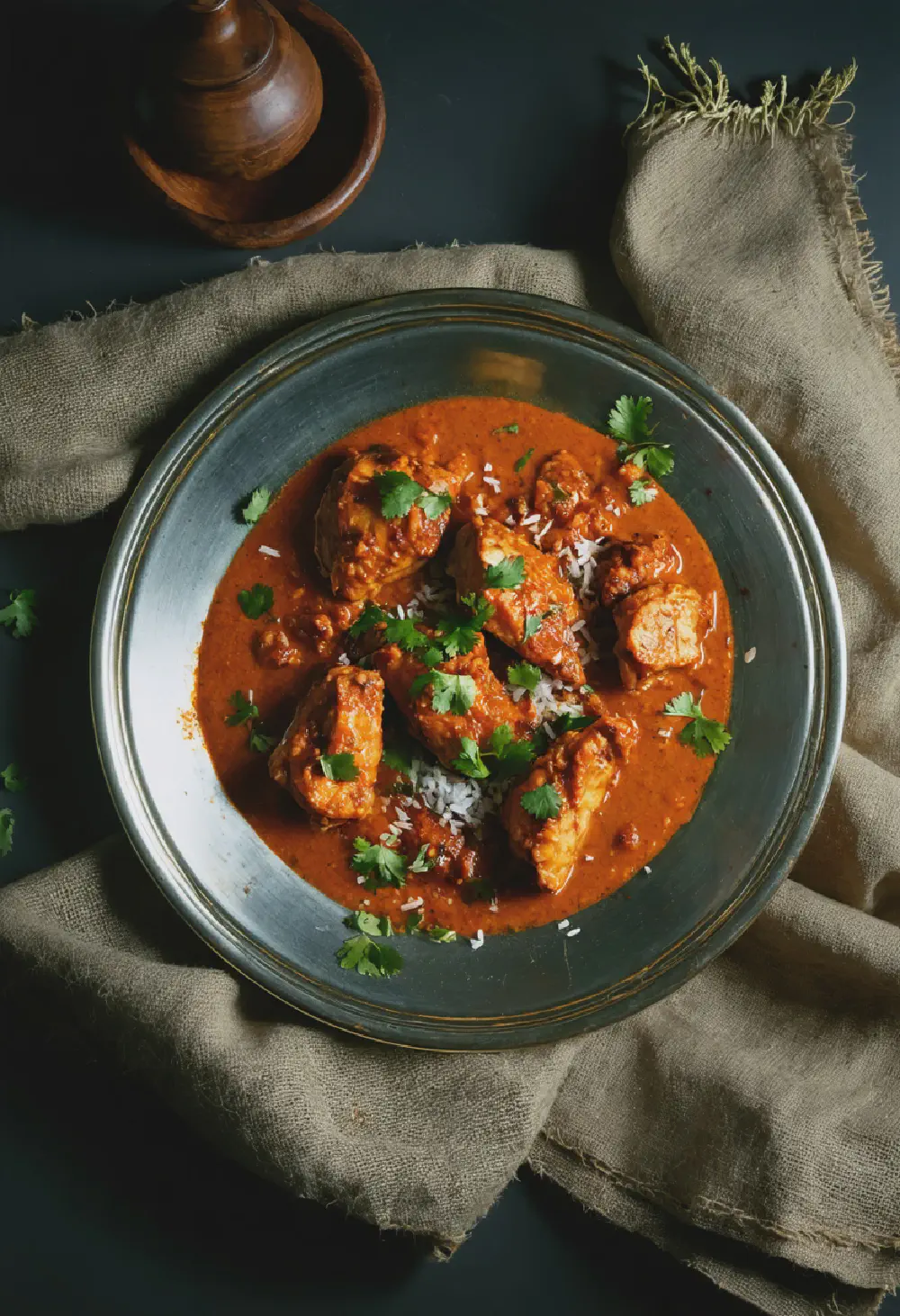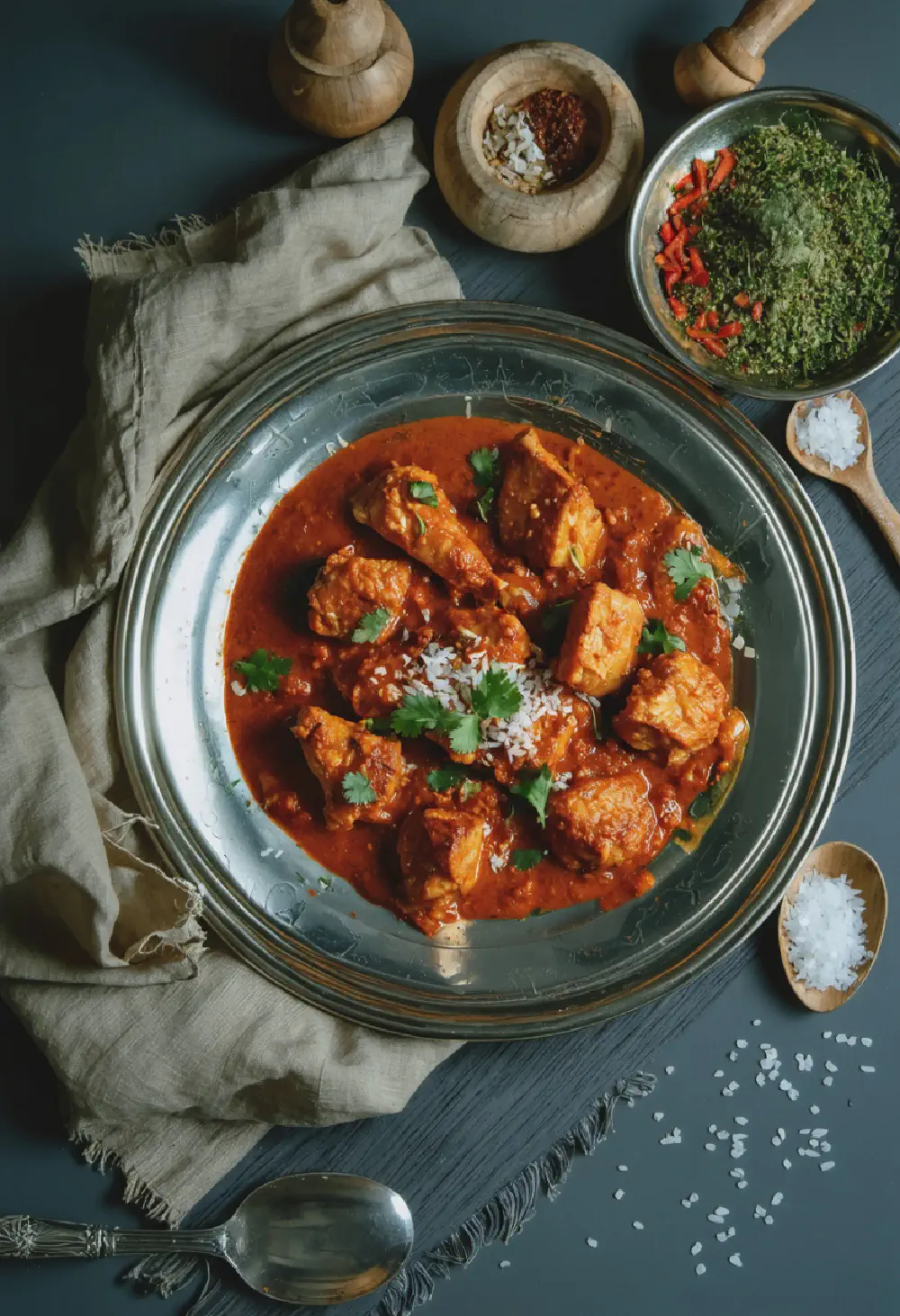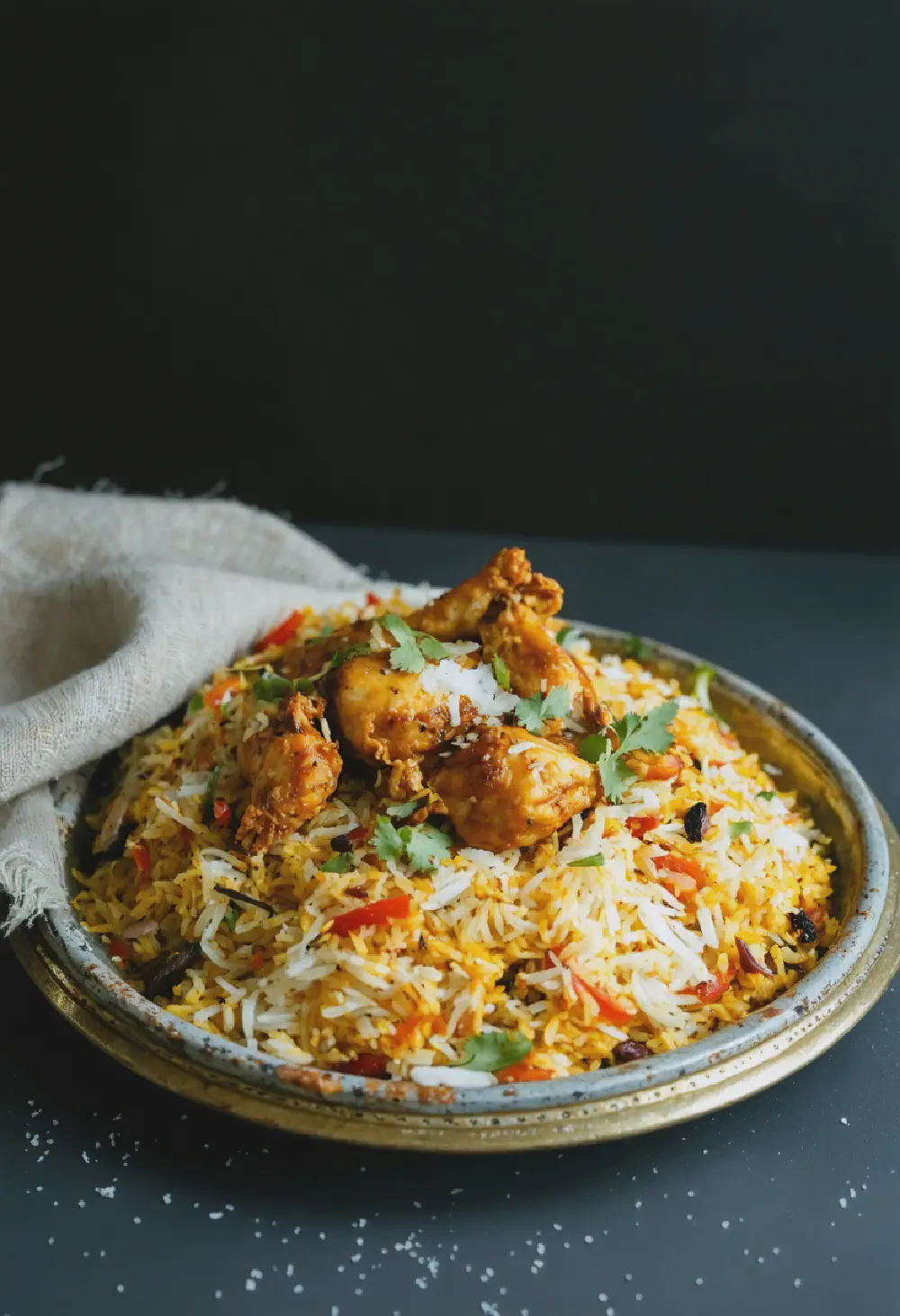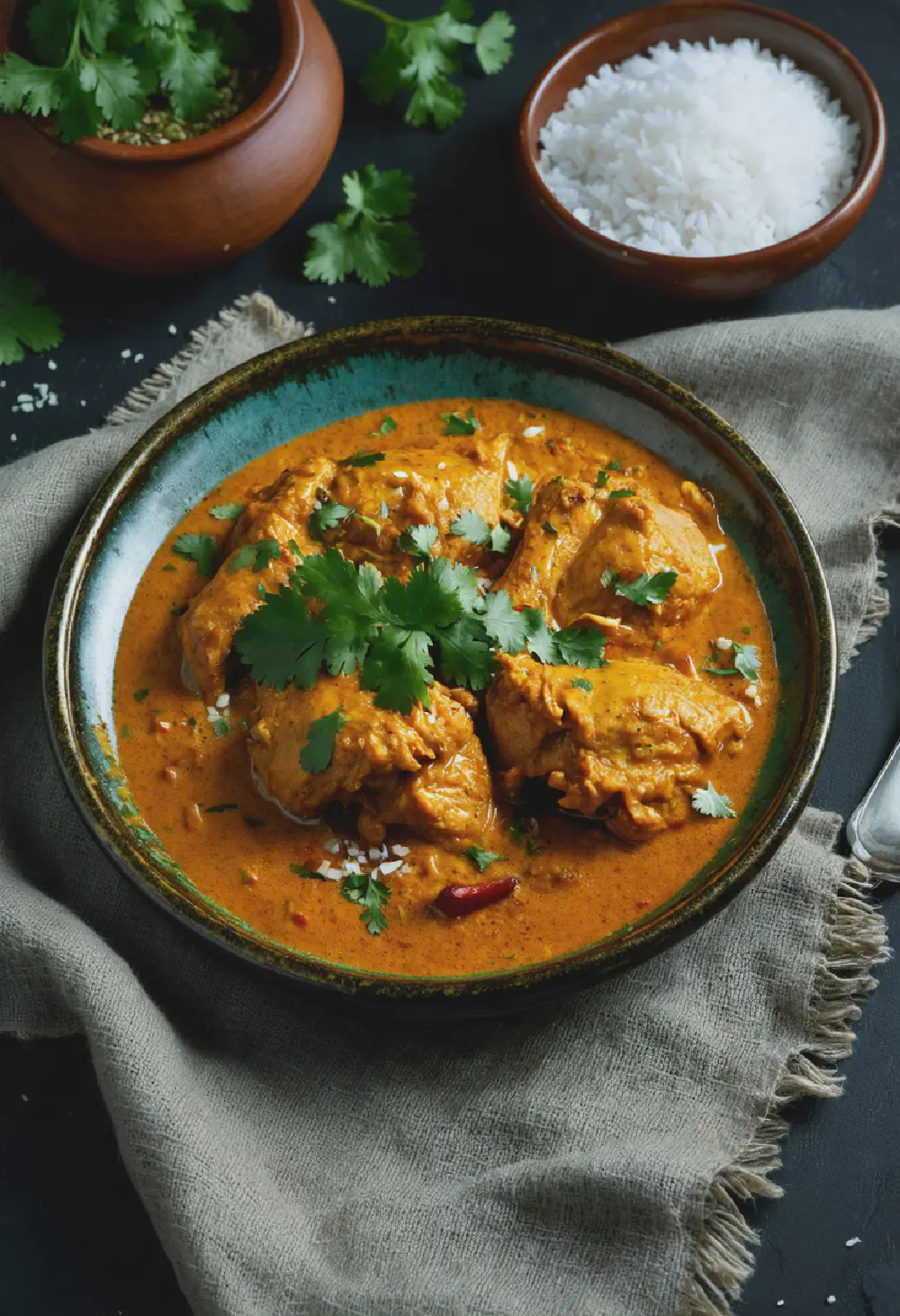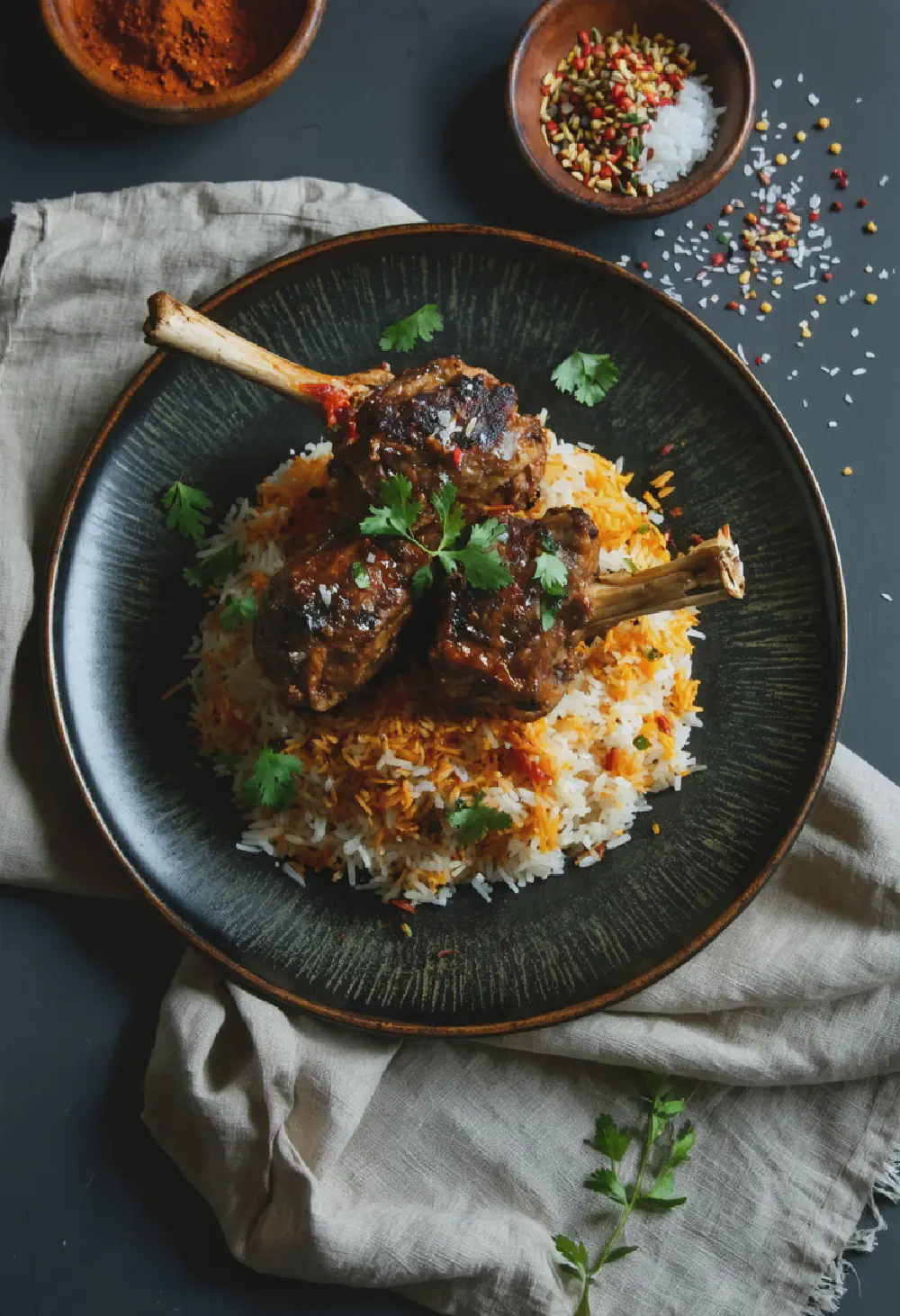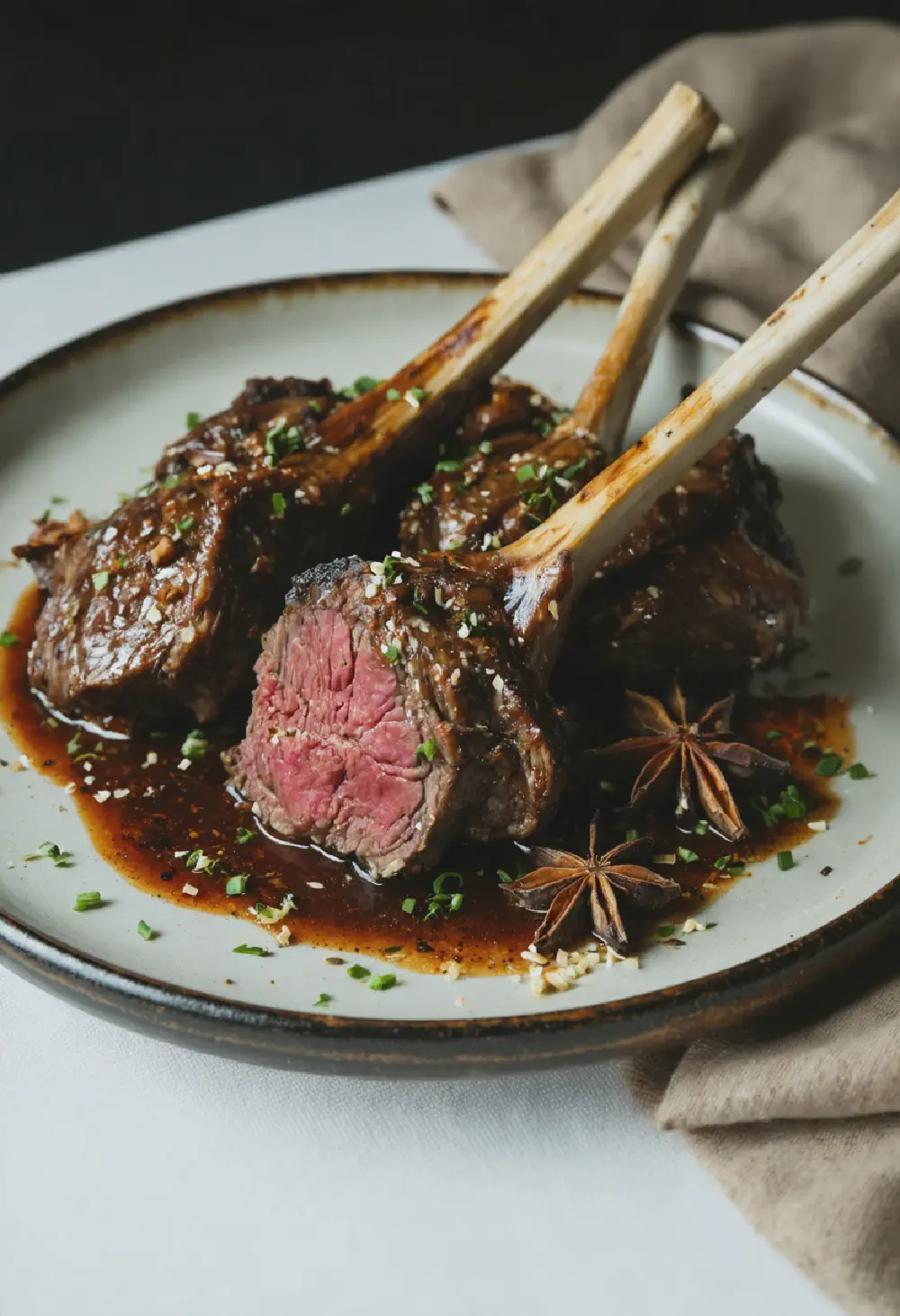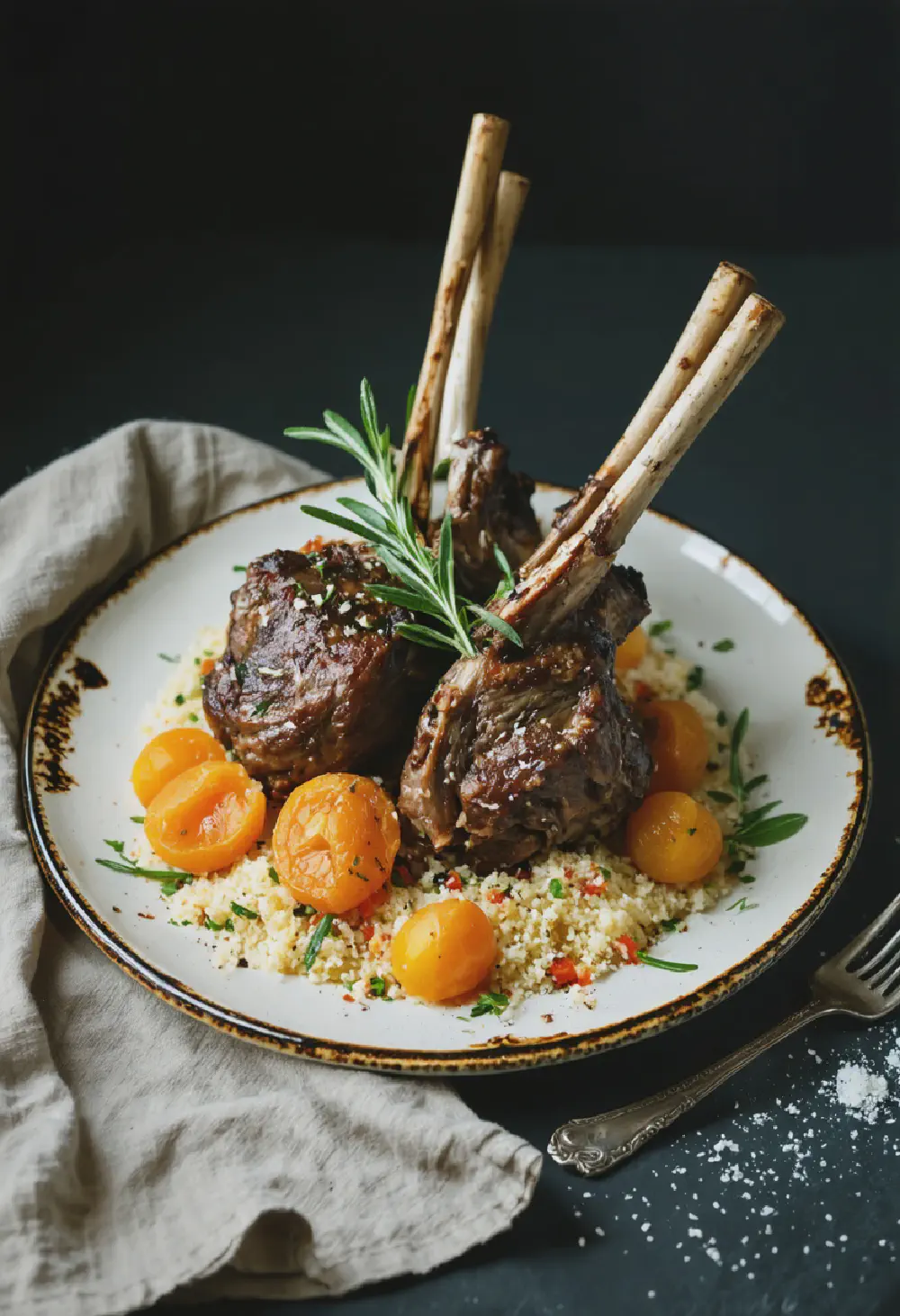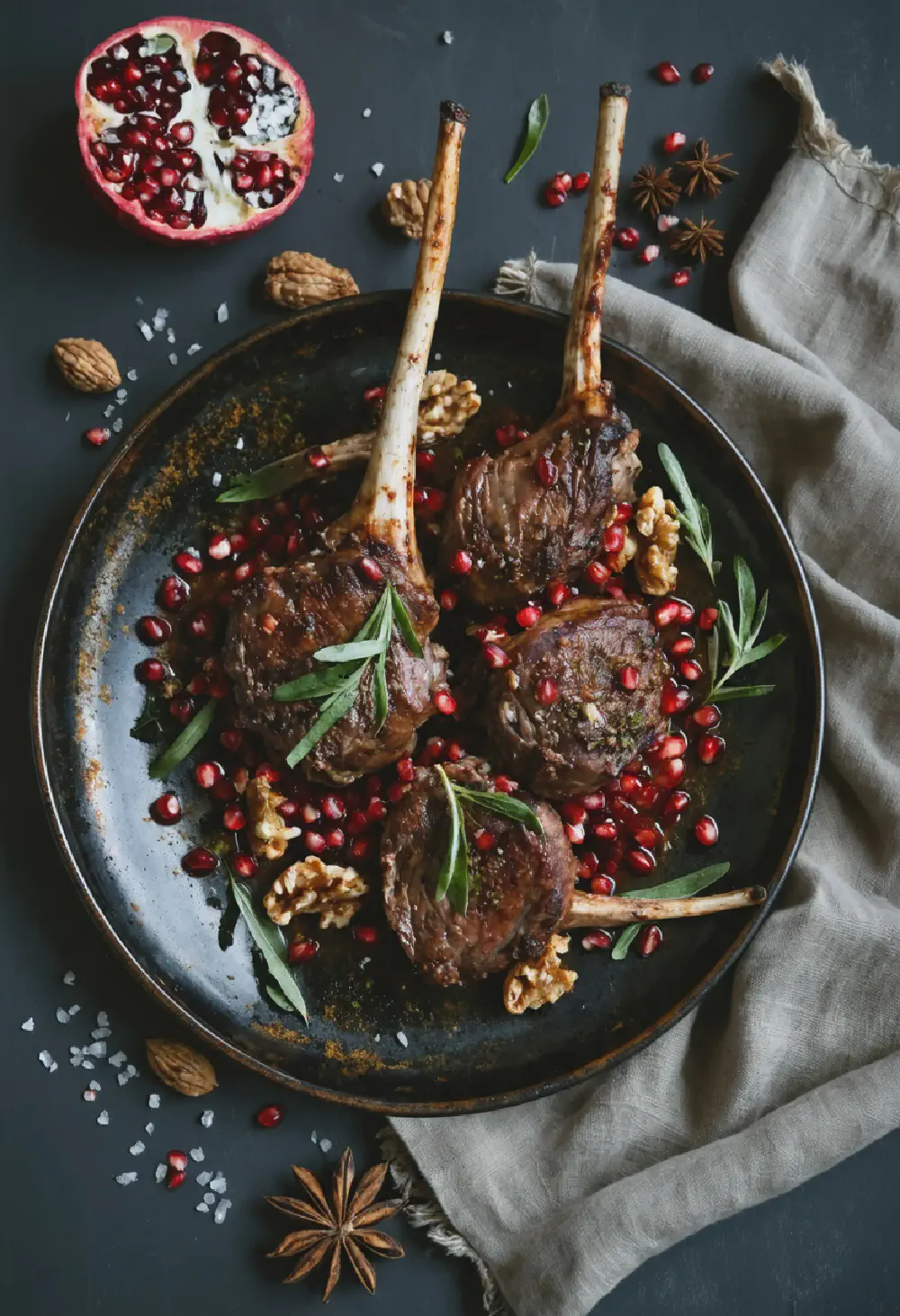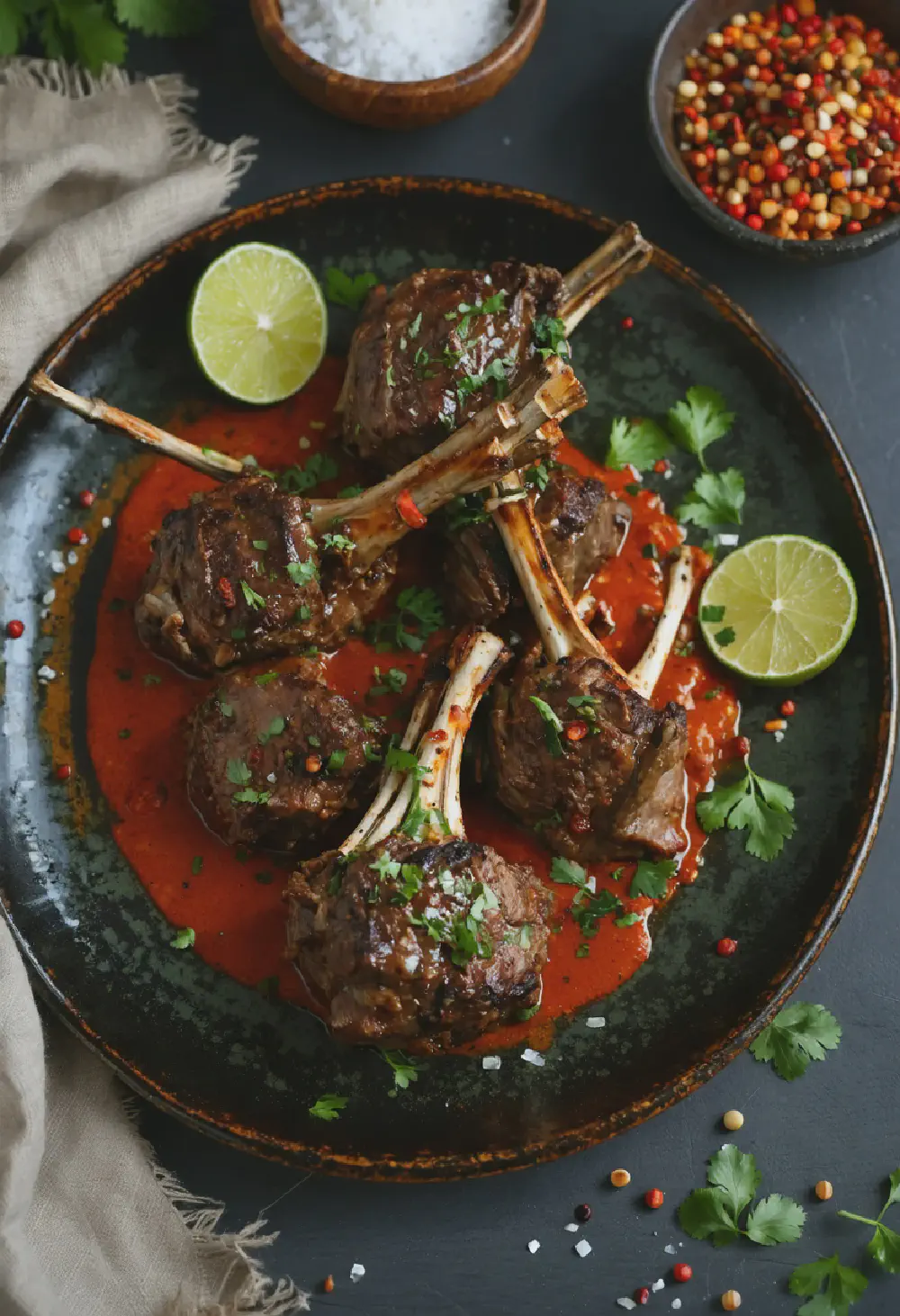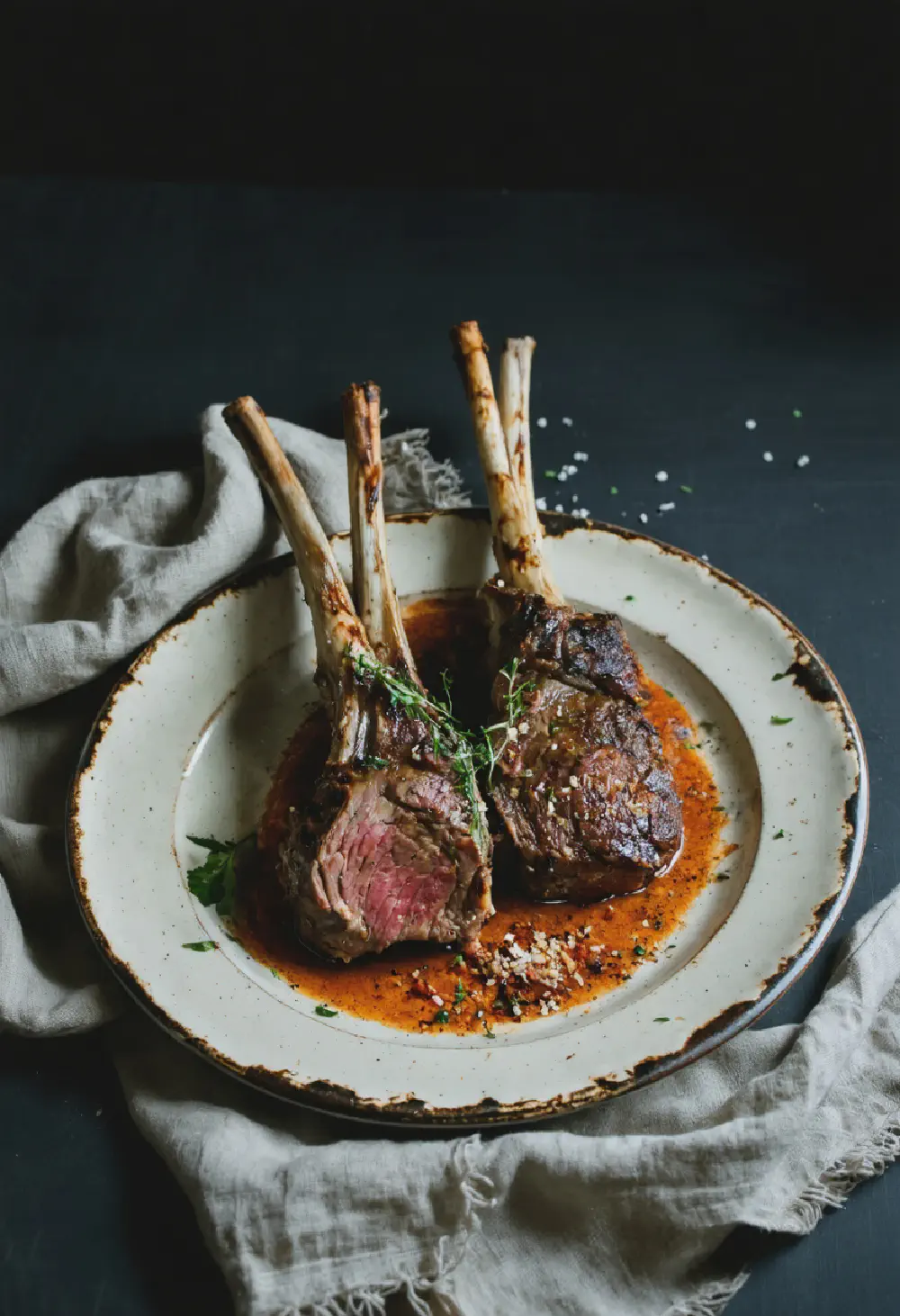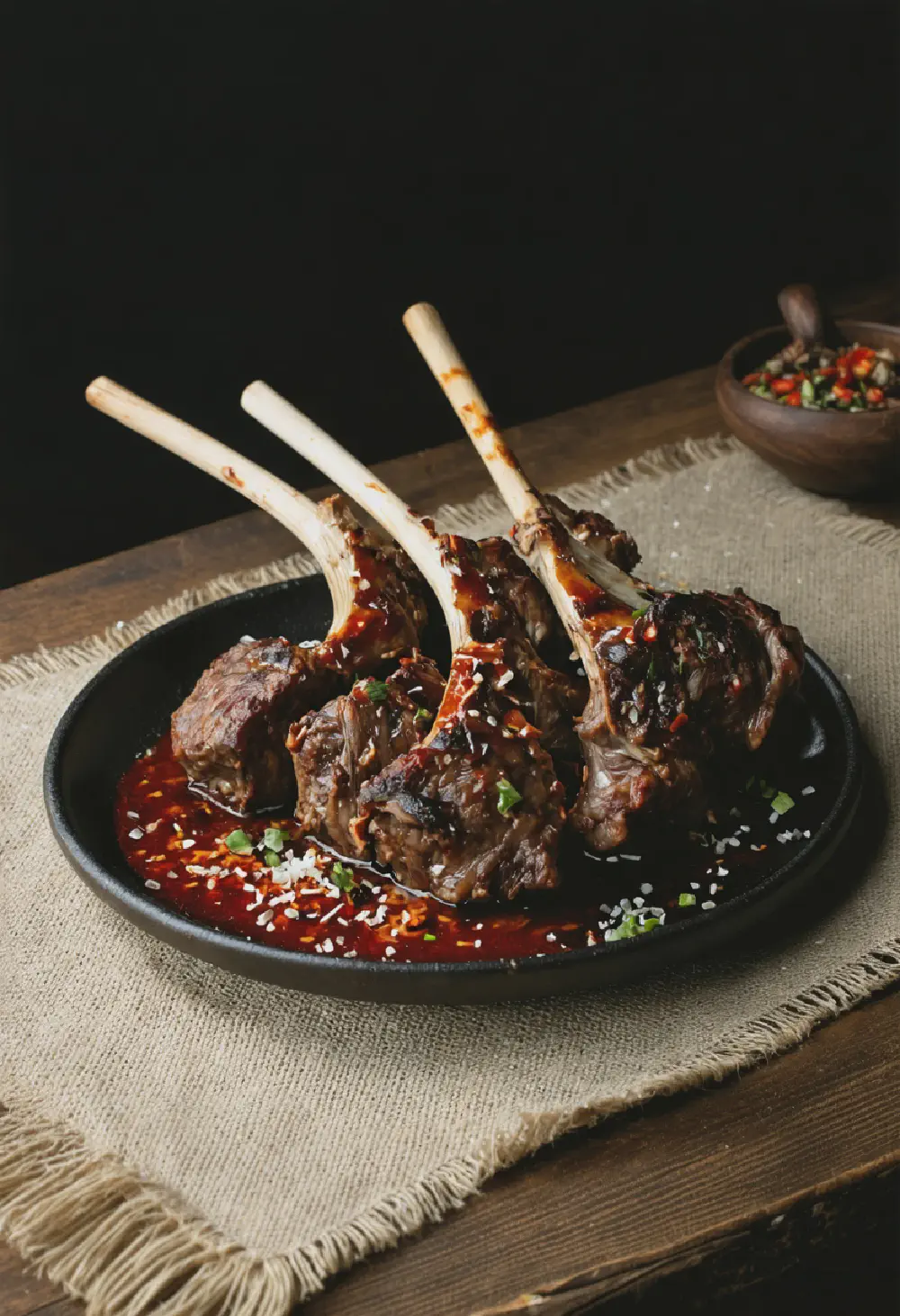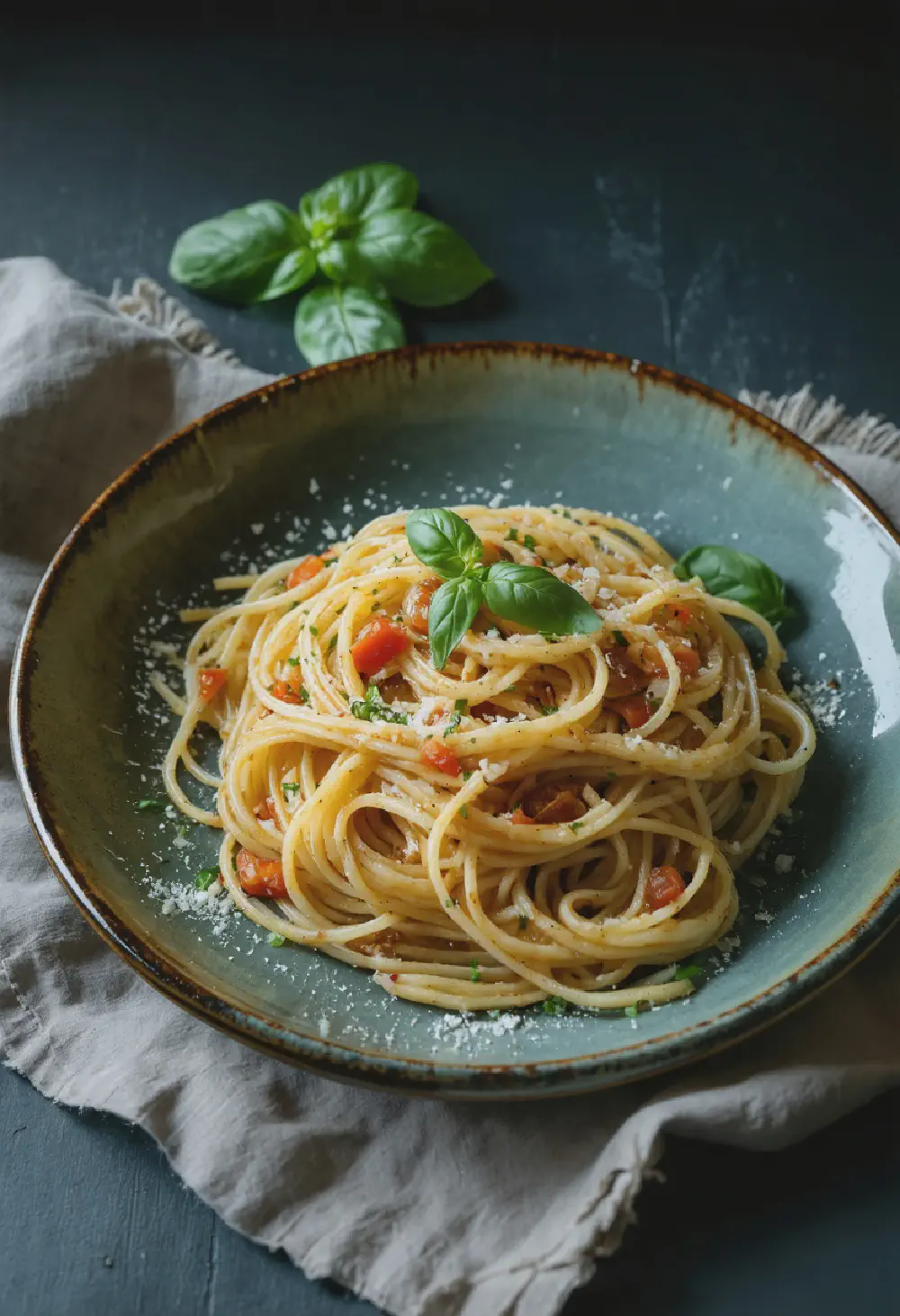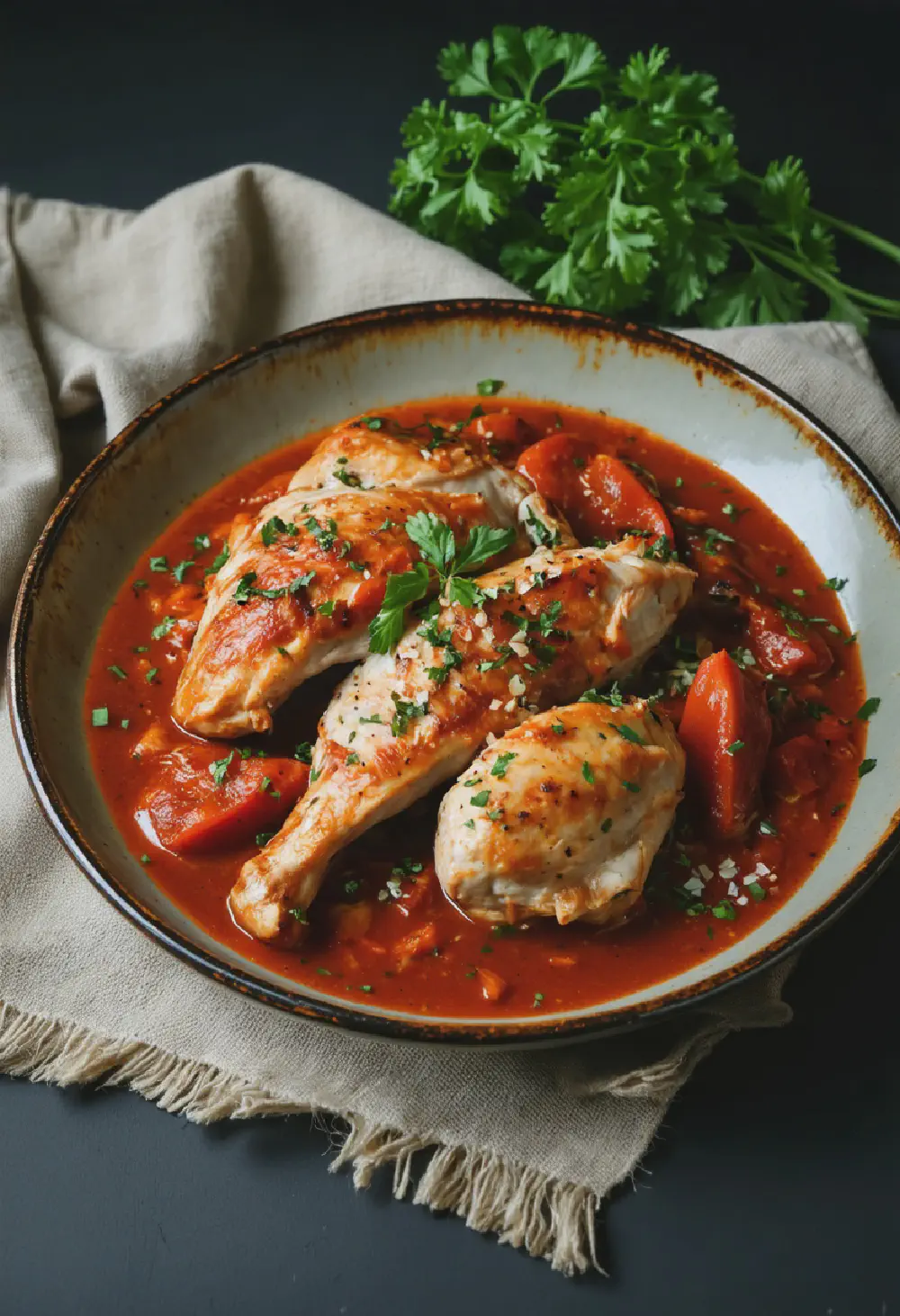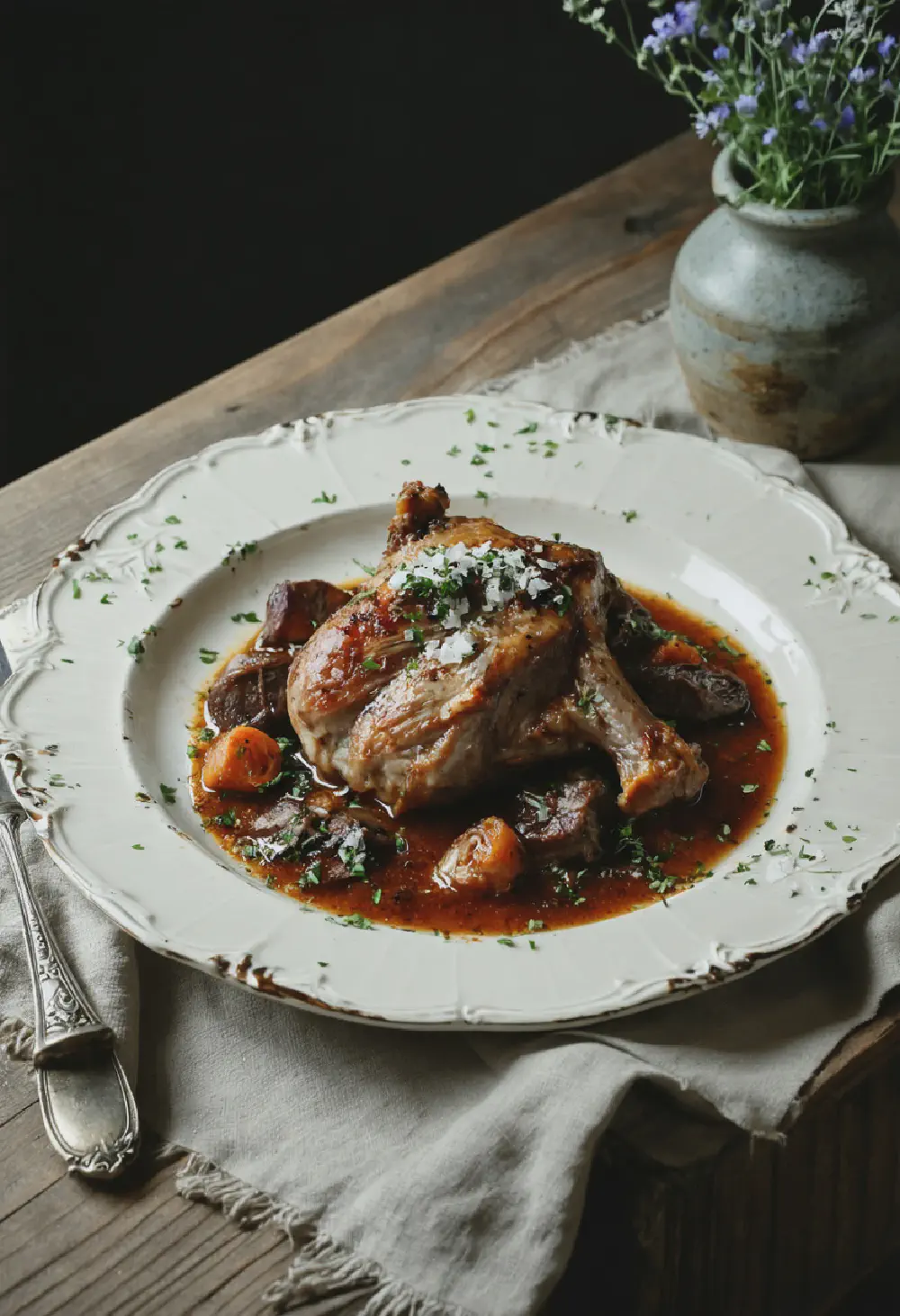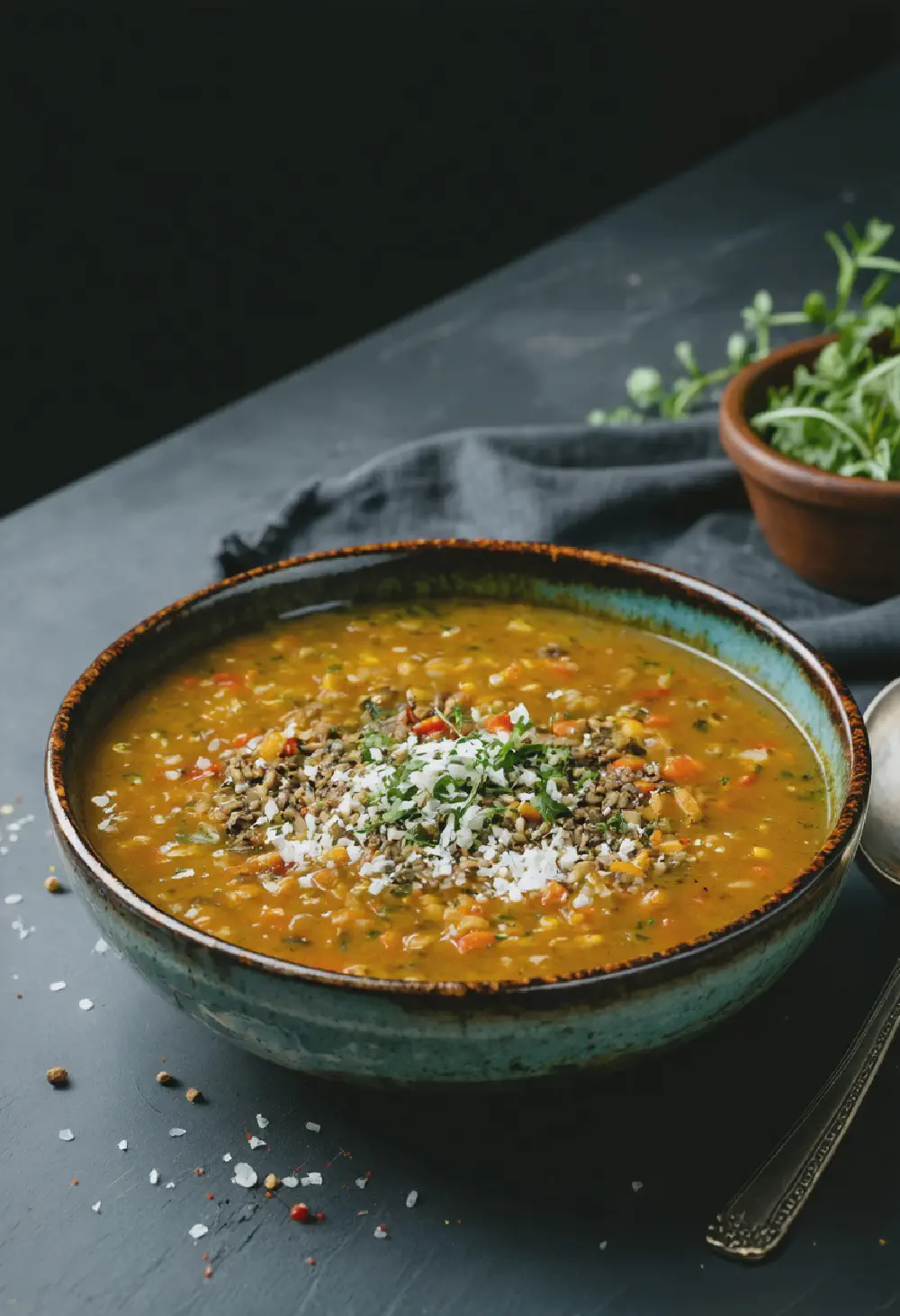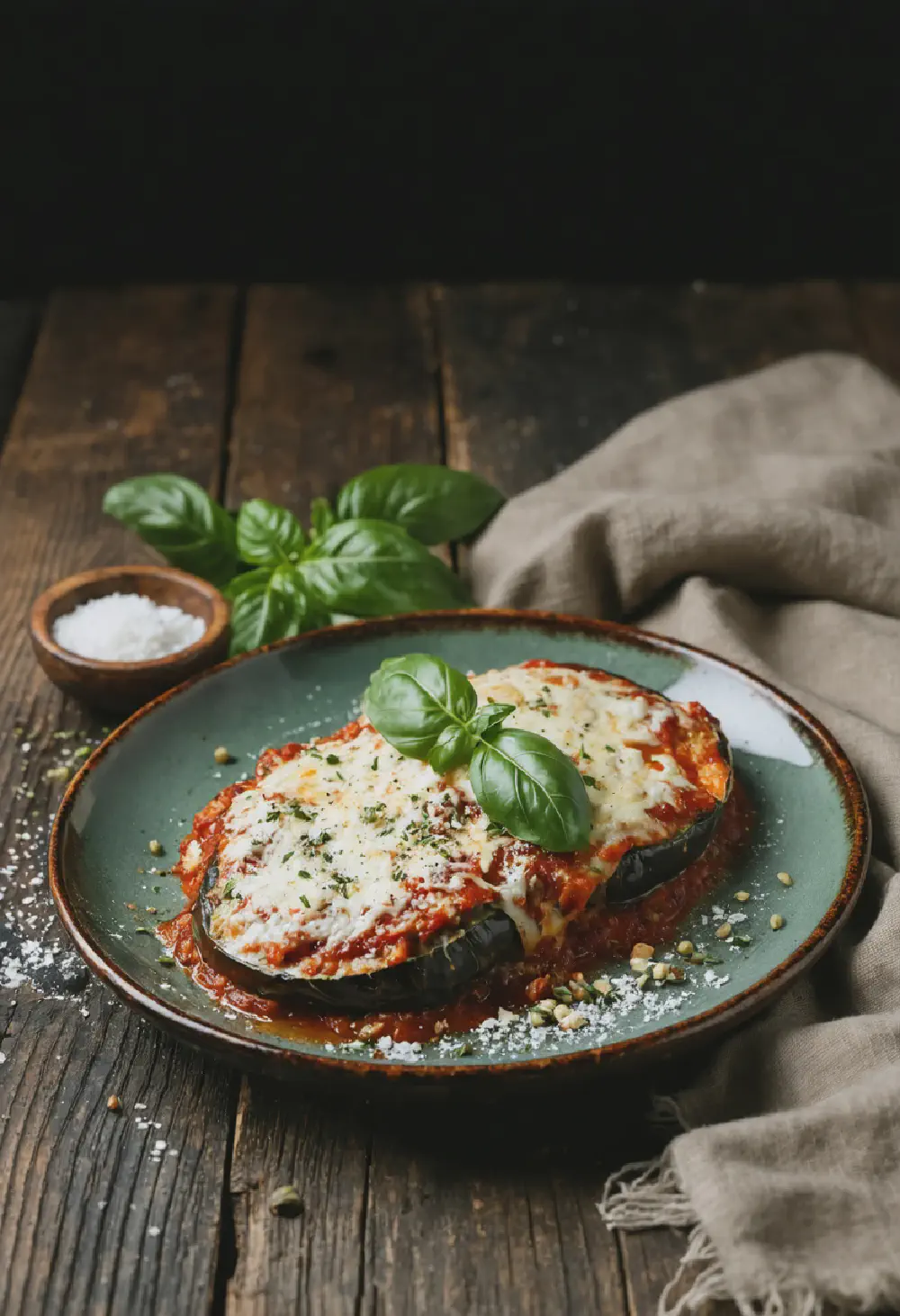Chicken Tikka Masala
30M
1H and 15M
- Makes 4
- 500g boneless chicken, cut into bite-sized pieces
- 1 cup plain yogurt
- 2 tablespoons ginger-garlic paste
- 1 teaspoon turmeric powder
- 1 teaspoon red chili powder
- 1 teaspoon garam masala
- 1 teaspoon cumin powder
- 1 teaspoon coriander powder
- Salt to taste
- 2 tablespoons vegetable oil
- 2 large onions, finely chopped
- 2 tomatoes, pureed
- 1/2 cup heavy cream
- 2 tablespoons kasuri methi (dried fenugreek leaves)
- Fresh coriander leaves for garnish
- In a bowl, mix yogurt, ginger-garlic paste, turmeric, red chili powder, garam masala, cumin powder, coriander powder, and salt to make the marinade.
- Add the chicken pieces to the marinade, ensuring they are well coated. Cover and refrigerate for at least 2 hours, preferably overnight.
- Preheat your oven to 200°C (400°F). Thread the marinated chicken onto skewers and place them on a baking tray. Bake for 20-25 minutes, turning once, until the chicken is cooked and slightly charred.
- In a large pan, heat the vegetable oil over medium heat. Add the chopped onions and sauté until golden brown.
- Add the tomato puree to the pan and cook until the oil begins to separate from the mixture.
- Stir in the heavy cream and kasuri methi. Simmer for 5 minutes.
- Add the baked chicken pieces to the sauce, stirring gently to coat. Simmer for another 10 minutes to allow the flavors to meld.
- Garnish with fresh coriander leaves and serve hot with naan or rice.
Chicken Tikka Masala: A Journey Through History, Taste, and Cultural Significance
History
Chicken Tikka Masala, a beloved dish in Indian cuisine, has a fascinating history that intertwines with the culinary traditions of the Indian subcontinent and the United Kingdom. While its exact origins are debated, one popular story attributes its creation to a chef in Glasgow, Scotland, in the 1970s. According to legend, a customer requested sauce for their dry chicken tikka, prompting the chef to whip up a creamy tomato-based concoction that would become Chicken Tikka Masala. However, some argue that the dish has roots in the Mughlai cuisine of Northern India, where similar dishes like butter chicken have been enjoyed for centuries. Regardless of its true origins, Chicken Tikka Masala has become a global sensation, representing the fusion of Indian flavors with Western influences.
Taste Profile
The taste profile of Chicken Tikka Masala is a harmonious blend of spices, creaminess, and tanginess that makes it a favorite among food lovers worldwide. The dish starts with succulent chunks of chicken marinated in a mixture of yogurt and spices like cumin, coriander, and garam masala, which infuse the meat with rich, aromatic flavors. Once cooked, the chicken is enveloped in a luscious, creamy tomato-based sauce. The sauce, often made with tomatoes, cream, and a touch of butter, provides a smooth and velvety texture that balances the heat from spices like chili powder or cayenne pepper. The result is a dish that is both comforting and indulgent, with layers of flavor that dance on the palate.
Cultural Significance
Within Indian cuisine, Chicken Tikka Masala holds a special place as a symbol of the country’s culinary adaptability and global influence. While it may not be a traditional dish in the strictest sense, its widespread popularity has made it an ambassador of Indian flavors around the world. In the UK, where it is often considered the national dish, Chicken Tikka Masala represents the fusion of Indian and British culinary traditions, showcasing how immigrant communities have enriched the local food culture. In India, the dish is celebrated for its versatility and appeal, often served at family gatherings and special occasions. Its presence on menus from street-side eateries to upscale restaurants underscores its cultural significance and enduring popularity within the diverse tapestry of Indian cuisine.
By exploring the history, taste profile, and cultural significance of Chicken Tikka Masala, we gain a deeper appreciation for this iconic dish and its role in the global culinary landscape. Whether enjoyed at home or in a restaurant, Chicken Tikka Masala continues to delight taste buds and bring people together through the universal language of food.
